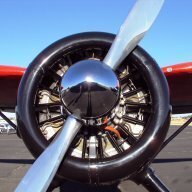Hi Kaz,
Completely agree with your comments about wax – cloud point of diesel fuels, in fact it’s more complicated as it varies geographically as well as seasonally.
What caught my attention was in the manufactures spec sheet, it said “Diesel/Jet A1” .. of cause Jet A1 won’t have the same issues and think this would be a better choice to avoid waxing.
Basscheffers,
The problem is Diesel Fuels vary considerably between seasons and region … to give you an example .. if you fill with Diesel, lets say March in Townsville, you will find the cloud point to be 11 deg C … if you then fly to south to Brisbane the max spec for cloud point is 3 deg C for the same period. If you delayed your flight until April the max cloud point is 0 deg C for Brisbane. Therefore the risk is about purchasing diesel fuels in warmer climate and flying into cooler geography/seasons as you may be at risk of fuel turning into wax in your fuel lines … not to mention the risk of fly high and cooling things off.
Jet A1 has a very low cloud point and should never be an issue with the type of flying we do.
Cheers
Jack





